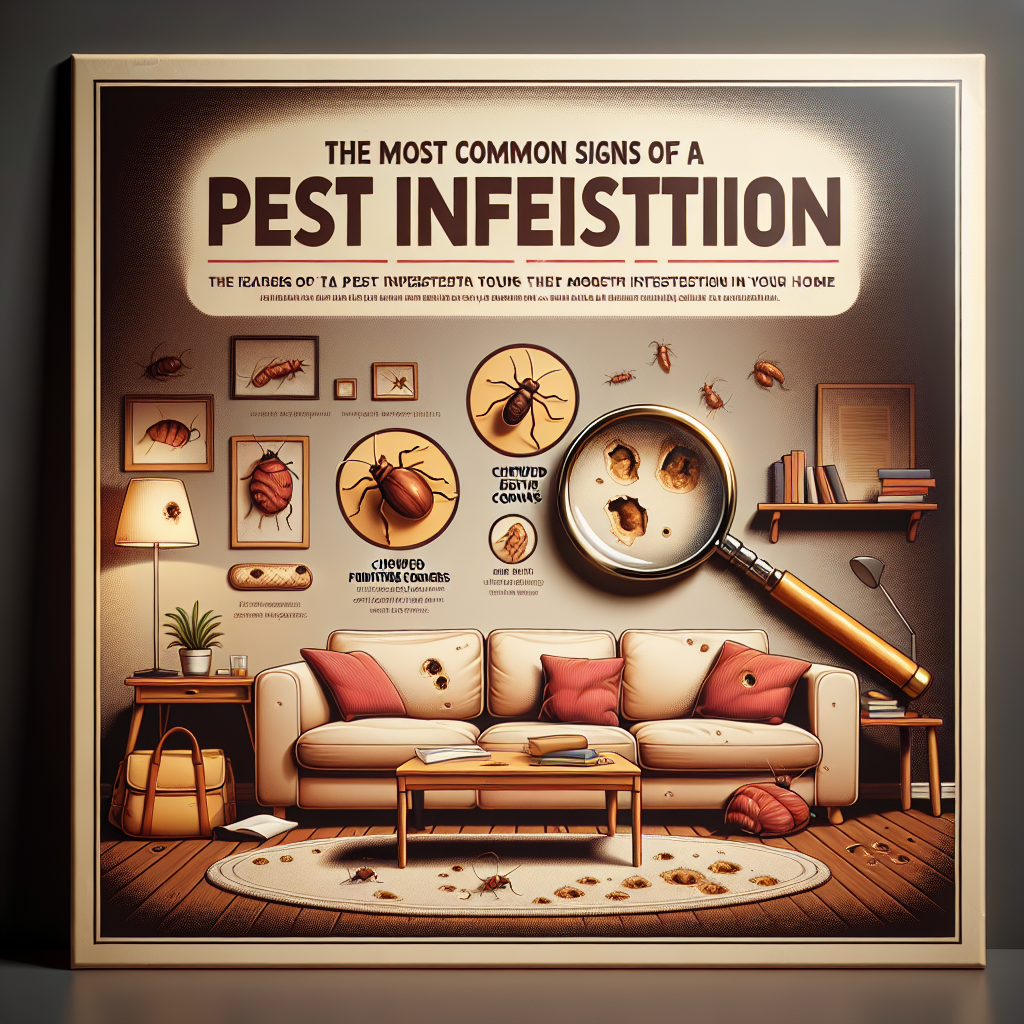When you think of your home, you likely envision a cozy sanctuary where you and your loved ones feel safe. But what happens when unwanted guests—in the form of pests—intrude on your comfortable living space? Recognizing the signs of a pest infestation early can save you from more significant problems down the line. In this article, we’ll guide you through the most common signs of a pest infestation in your home and provide tips on what to do next.
1. Unpleasant Odors: A Hidden Clue
One of the first indicators of a pest infestation can be unpleasant odors. Certain pests, like rodents or cockroaches, may leave behind a distinctive smell, often described as oily or musty. If you notice an unusual scent in your home, especially in hidden areas like basements, attics, or behind appliances, it’s worth investigating further.
What to Do:
- Conduct a thorough inspection of the areas where the odor is strongest.
- Check for droppings, nests, or any signs of pest activity.
2. Droppings: Nature’s Warning Signs
Pest droppings may vary in size, shape, and color depending on the type of pest, but they are often a telltale sign of an infestation. Rodent droppings, for example, are typically small and black, whereas larger droppings may indicate a larger pest, such as a raccoon.
What to Do:
- Use gloves to carefully collect any droppings you find and identify the source.
- If droppings are found, this may indicate an established infestation, and it may be necessary to seek professional help.
3. Unusual Noises: Listen Closely
Have you ever heard scratching, scurrying, or buzzing noises in your walls or ceilings? These sounds can be signs of pests moving about, whether it’s rodents scurrying around or insects buzzing around your light fixtures.
What to Do:
- Try to pinpoint where the sounds are coming from.
- If the noises persist and you cannot find the source, it might be time to call in pest control.
4. Damage to Property: An Unwelcome Transformation
Pests don’t just invade; they also cause damage. Look for signs such as chewed wires, gnawed furniture, holes in walls, or even small bites on wood surfaces. Termites and carpenter ants are particularly notorious for causing structural damage.
What to Do:
- Document the damage by taking photos and estimating the extent.
- Contact a pest control professional to assess the situation and recommend treatment options.
5. Nesting Materials: Evidence of Something More
Finding nesting materials, such as shredded paper, fabric, or droppings, can be a clear warning signal that pests have made your home their own. Rodents, in particular, are known for creating nests in hidden spaces.
What to Do:
- Remove any accessible nesting materials to reduce the likelihood of an infestation.
- Check insulation, attic spaces, and even behind appliances for hidden nests.
6. Seeing Pests: The Most Obvious Sign
Sometimes, the most straightforward clue is simply spotting a pest in your home. Whether it’s a mouse darting across the kitchen floor or a cluster of ants marching in formation, seeing pests—even one—can indicate a potential infestation.
What to Do:
- Take note of the type of pest and the frequency of sightings.
- If you continue to see pests, take immediate action to prevent further invasion.
7. Infestations of Pets: Furry Friends Can Bring Uninvited Guests
If you have pets, they can also be carriers of pests like fleas and ticks. Regular grooming and inspection of your pets can help catch these invaders before they spread to your home.
What to Do:
- Make sure to groom and treat your pets with appropriate flea and tick preventatives.
- Keep an eye on your pets for signs of irritation or scratching, which could indicate pests.
Conclusion: Stay Vigilant and Take Action
Being proactive in identifying pests can help mitigate many of the issues that come with an infestation. Regularly inspect your home for the signs mentioned above, and don’t hesitate to seek professional help if needed. Your home should be your haven, and with diligence, you can keep it pest-free.
By following these guidelines and knowing what to look for, you can protect your home and maintain the warmth and comfort that it provides. Remember, the earlier you address a pest problem, the easier and less costly it will be to resolve!


